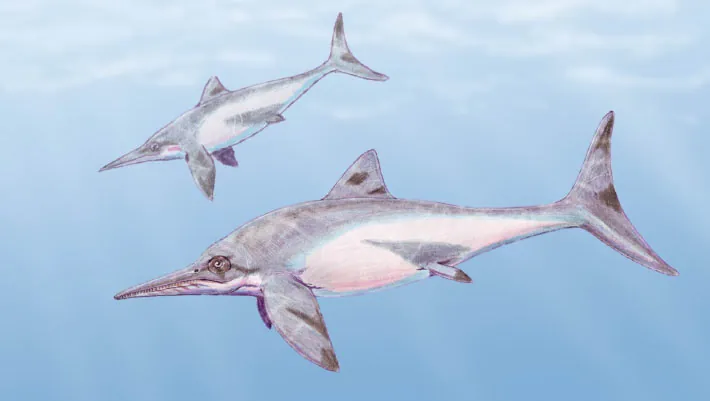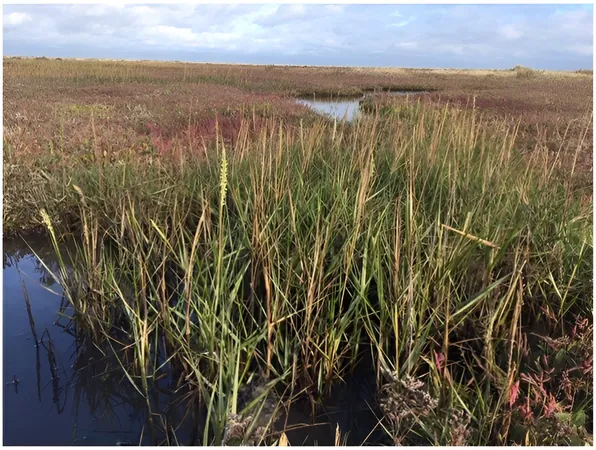
Groundbreaking Discovery: A New Species of Ichthyosaur Unveiled from Colombian Fossils!
2024-10-11
Author: Ming
Groundbreaking Discovery: A New Species of Ichthyosaur Unveiled from Colombian Fossils!
In a stunning revelation, paleontologists have described a previously unknown species of ichthyosaur, specifically a member of the ophthalmosaurid genus Platypterygius, which thrived around 125 million years ago. This remarkable find underscores the diversity and adaptability of marine reptiles during the Early Cretaceous period.
The Ichthyosaur and Its Era
Ichthyosaurs, part of the family Ophthalmosauridae, reigned over the ancient oceans during the Jurassic and Cretaceous epochs. They first emerged globally around 170 million years ago, filling the ecological niches left vacant by other ichthyosaur lineages that vanished at the conclusion of the Toarcian stage approximately 174 million years ago.
Introducing Platypterygius elsuntuoso
The newly identified species, named Platypterygius elsuntuoso, belongs to a lineage that includes well-known genera such as Aegirosaurus and Ophthalmosaurus. Notably, it swam the seas during the Early Barremian, a time marked by significant marine biodiversity.
Research Team's Insights
Lead researcher Dr. María Páramo-Fonseca from Universidad Nacional de Colombia explains, “The morphology of the new specimen matches the defining characteristics of Platypterygius, confirming its classification in this genus.” The distinct differences observed between this specimen and other members of the genus further validate the establishment of Platypterygius elsuntuoso as a new species.
Fossil Discovery
The fossil, which represents a juvenile or subadult ichthyosaur, was discovered in 1999 by scientists from the Fundación Colombiana de Geobiología. It includes a nearly complete skull and several important skeletal elements, such as an atlas-axis complex, cervical vertebrae, coracoid, and phalanges. The specimen was unearthed from a geological formation at La Cabrera hill in Boyacá, Colombia.
Significance of Geological Context
While the exact geological context remains partly uncertain, researchers have noted the presence of numerous ammonoid specimens from the same site, with some preliminarily identified as Acanthoptychoceras, adding a thrilling layer to this discovery.
Comparative Analysis
In their comprehensive analysis, the research team compared Platypterygius elsuntuoso with other known Cretaceous and Late Jurassic ichthyosaurs, alongside revisiting the Platypterygius genus based on both published records and firsthand observations of the Colombian material. Their findings suggest that Platypterygius is characterized by a unique forelimb structure and a specific array of skull features. They subsequently recognized several valid species within this genus, including the newly described Platypterygius elsuntuoso.
Broader Implications
This discovery not only introduces a new species to our understanding of marine life during the Cretaceous but also highlights the fact that Platypterygius was a cosmopolitan genus that diversified extensively as it navigated the waters of prehistoric oceans.
Published Findings
The findings regarding Platypterygius elsuntuoso have been documented in a forthcoming issue of the Earth Sciences Research Journal, further enriching our grasp of ancient marine ecosystems.
Future Exploration
This extraordinary discovery invites researchers and enthusiasts alike to delve deeper into the history of Earth’s marine life and the remarkable adaptations that shaped these prehistoric creatures. What other secrets do the ancient seas hold? Stay tuned for more thrilling updates in the world of paleontology!


 Brasil (PT)
Brasil (PT)
 Canada (EN)
Canada (EN)
 Chile (ES)
Chile (ES)
 España (ES)
España (ES)
 France (FR)
France (FR)
 Hong Kong (EN)
Hong Kong (EN)
 Italia (IT)
Italia (IT)
 日本 (JA)
日本 (JA)
 Magyarország (HU)
Magyarország (HU)
 Norge (NO)
Norge (NO)
 Polska (PL)
Polska (PL)
 Schweiz (DE)
Schweiz (DE)
 Singapore (EN)
Singapore (EN)
 Sverige (SV)
Sverige (SV)
 Suomi (FI)
Suomi (FI)
 Türkiye (TR)
Türkiye (TR)